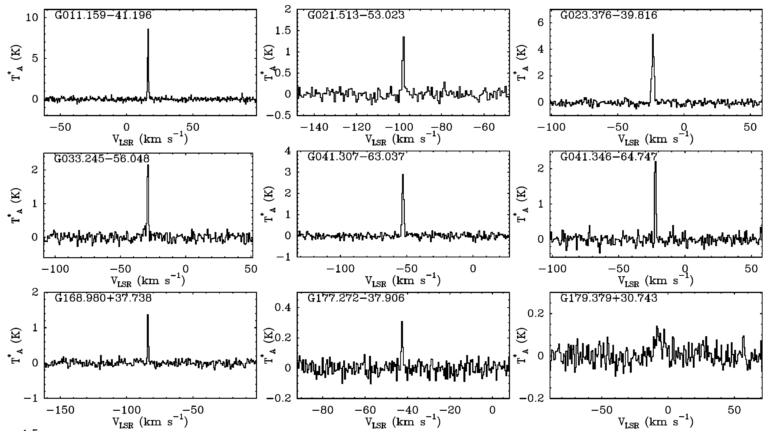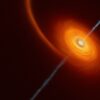Maser emissions, “cosmic lasers” from interstellar and circumstellar medium, are produced by the amplification of stimulated emissions. Bright and compact maser sources are good targets for high-accuracy astrometry in the kinematic study of the Milky Way.
A research team from National Time Service Center (NTSC) of the Chinese Academy of Sciences conducted a 22 GHz water maser survey towards the O-rich asymptotic giant branch (AGB) stars in the Sagittarius stellar stream. Using the Nobeyama 45-m and Tidbinbilla DSS-43 70-m telescopes, 21 maser emissions were found, of which 20 were detected for the first time.
The results were published in Monthly Notices of the Royal Astronomical Society on Sept. 9.
The Sagittarius Stellar Stream is the most prominent stellar stream around the Milky Way, and is produced by the accretion and mergers of our Galaxy with its satellite dwarf galaxy, the Sagittarius Dwarf Spheroidal Galaxy.
“Investigation of this stream could help scientists to probe the galactic evolution and dark matter distribution,” said Prof. Wu Yuanwei, leader of the research team.
The researchers studied the Galactic distributions of H2O and SiO maser-traced AGBs in the Sagittarius orbital plane, and found an elongated structure towards the (l, b) ~ (340°, 40°) direction.
To verify the association between masers and the Sagittarius tidal stream, they further studied the 3D motions of these sources. Results suggested that these sources are still from the thick disk of the Milky Way, with a remarkable outward motion velocity of ~ 50 km s-1 away from the Galactic center.
“There must exist maser emissions in the Sagittarius stream. The reason why we still cannot confirm masers within the Sagittarius stream is the limitation of sensitivity of our survey and sample bias,” said Prof. Wu. “We’ll try more samples in our future study.”
More information:
Yuanwei Wu et al, Water-maser survey towards off-plane O-rich AGBs around the orbital plane of the Sagittarius stellar stream, Monthly Notices of the Royal Astronomical Society (2022). DOI: 10.1093/mnras/stac1971
Provided by
Chinese Academy of Sciences
Citation:
Searching for maser emissions in the Sagittarius stellar stream (2022, September 9)



